How Do You Know if You Have a Busted Head Gasket
Last Updated on December 9, 2021
With time, crumbling internal combustion engines become prone to a number of possible failures. While some of these failures are quite small-scale in scope, others can pb to severe drivability issues, which frequently necessitate costly repair. This, of course, is never a desirable situation.
Need immediate help for your car problem? Chat online with an expert:
Of these more severe issues, few are as despised as a blown head gasket. A diddled head gasket is high on the list of troubling bug encountered by motorists, whose engines have begun to show their historic period. Unfortunately, caput gasket repair is seldom simple, or cheap. This fact lone is a mutual source of business organisation for those facing such bug.
While blown head gaskets are not extremely common, failures of this type do occur often plenty to place increased importance upon recognizing the symptoms of such a status. By quickly identifying these symptoms, a repair tin exist promptly initiated, thereby getting your vehicle dorsum on the road in tape time.
Read on to learn more about the role of an engine'southward head gasket, as well as the various symptoms that accompany a blown head gasket.
See Also: half-dozen Signs of an Oil Pan Gasket Leak
What is a Head Gasket?
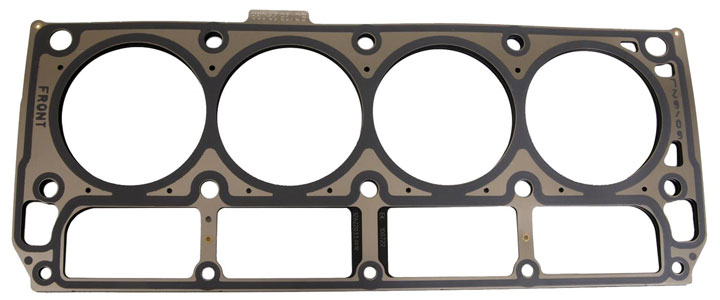
A head gasket is the specialty seal that lies between an internal engine's block and cylinder caput(due south). This seal prevents combustion gasses from escaping an engine's cylinders, while likewise preventing the transfer of coolant and oil into an engine'south combustion chambers.
Each engine has 1-2 head gaskets, depending upon the exact arrangement of a particular engine's cylinders. Inline engines feature only one cylinder head and therefore possess merely one head gasket. On the contrary, "5" configuration engines feature two individual cylinder heads and therefore characteristic a total of ii head gaskets.
Meet Also: V6 vs V8 engine
In the past, copper head gaskets were quite common among production engines, equally were diverse composite gaskets, which typically consisted of graphite or asbestos. Today, nigh production caput gaskets are of a Multi-Layer Steel (MLS) design. These gaskets feature 2-5 layers of thin steel, which are commonly coated in a rubberized coating.
An engine's caput gasket(s) are sandwiched in place between an engine's block and heads, with the use of precisely torqued head bolts. In many cases, these bolts are of the torque-to-yield diverseness and stretch when tightened to provide the all-time possible clamping seal.
An engine'due south head bolts are likewise torqued in a specific style, which frequently involves working outward from each head'southward centermost bolts.
What Does information technology Mean to "Blow" a Head Gasket?
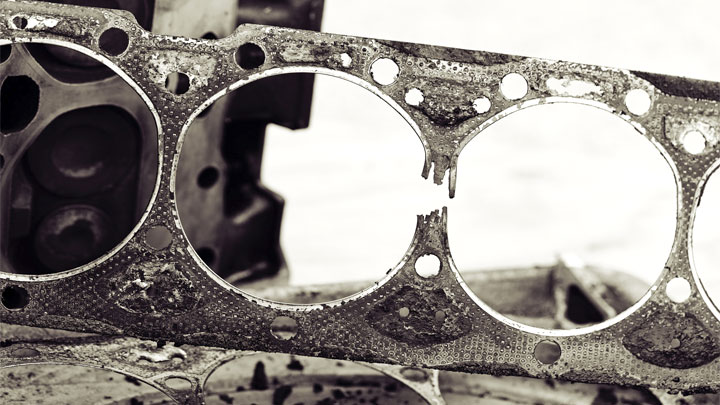
The term "blown head gasket", is used to depict a caput gasket that has been structurally compromised. This compromised segment of a head gasket prevents a proper sealment betwixt an engine's block deck/cylinder heads. This creates a leak, which can manifest in several different means.
Depending upon the verbal point of failure within a head gasket, several different issues can present themselves. Coolant or oil tin be displaced into one or more than of an engine's cylinders, or be purged externally. Additionally, oil and coolant can be displaced into 1 another, leading to the mixing of fluids.
A leaking caput gasket can also allow combustion gases to escape into an engine's cooling system or into the crankcase itself. Alternatively, a blown head gasket can allow combustion gases of a particular cylinder to escape externally, or into an adjacent cylinder.
Caput gasket leaks of whatsoever type can lead to a number of drivability related issues, which tin compound equally the severity of such a leak progresses. Some of the most serious secondary issues related to a blown head gasket include overheating and compression loss.
Signs of a Blown Head Gasket
A blown head gasket can present many symptoms, which tin can aid in diagnosis. The prevalence of these symptoms typically varies on a case past example basis and is largely dependent upon the verbal portion of the caput gasket that has been affected.
The post-obit are several of the most common symptoms of caput gasket failure.
#i – White-Colored Frazzle Smoke
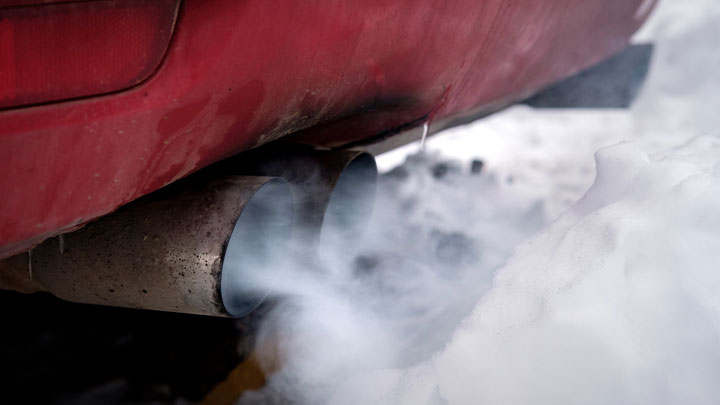
If a diddled caput gasket allows coolant to enter one or more than of an engine's cylinders, white exhaust fume is likely to be noticed.
This comes as a byproduct of coolant that is burnt during combustion and downstream travel through a vehicle's exhaust organisation.
#2 – Continual Coolant Loss
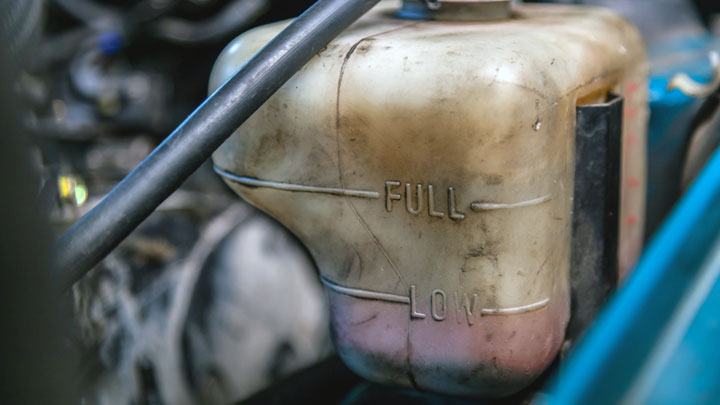
If your automobile appears to be losing coolant at a consistent rate, without whatever visible leaks, there is a practiced risk that your engine's caput gasket is to blame.
Due to the internal nature of a head gasket leak, coolant is often burnt, without ever being visually expelled.
#3 – Bubbling In Cooling Organization
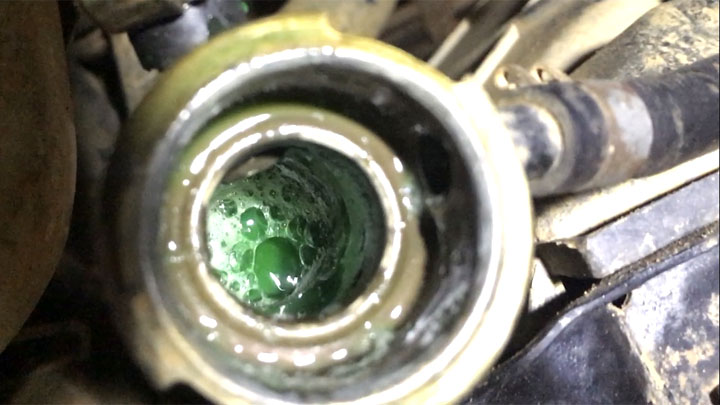
A deadening, steady bubbles of coolant within a vehicle's radiator or surge tank is often a sign of ill-directed combustion gases. A specialized combustion gas detector can be used to confirm such a condition with relative ease.
#four – Milky Coolant
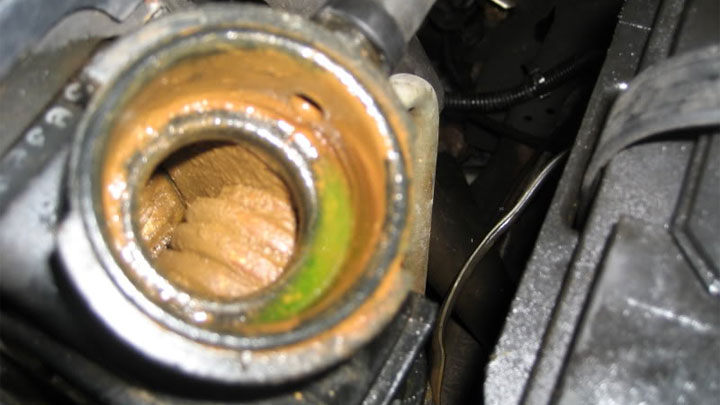
A caput gasket leak oft manifests as the swapping of oil and coolant. This often leads to a desperate change in coolant conditions. When this occurs, coolant often takes on a grey or brown coloring and appears milky in state.
Related: Different Types of Coolant
#v – External Oil/Coolant Leaks
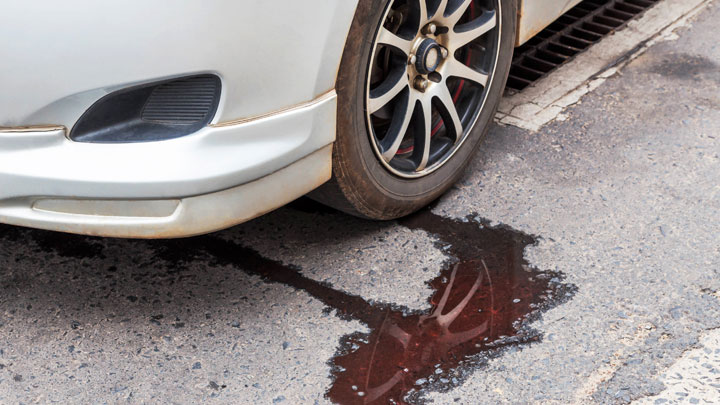
In certain instances, a diddled head gasket can cause a visually evident coolant or oil leak. This leak volition be present at the mating betoken between an engine'due south block and the cylinder head above although it'southward possible for oil to make it all the way to your tailpipe.
In rare cases, small bubbles tin be observed in leaking fluids of this nature, as small-scale amounts of compression are too purged.
Read As well: Valve Cover Gasket Leak Symptoms
#6 – Engine Overheating
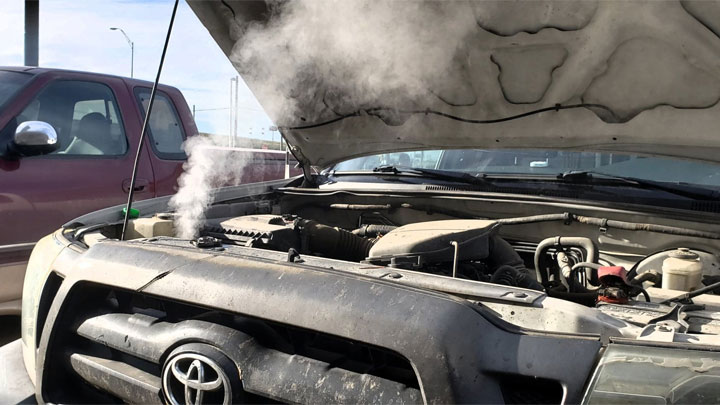
A blown head gasket usually leads to engine overheating. This occurs for several different reasons, the most mutual of which chronicle to coolant loss.
Additionally, the escape of combustion gases into an engine'due south cooling system can also play a part in overheating.
#vii – Poor Engine Performance

In instances where pinch is lost through a compromised caput gasket, an engine'south performance will nearly certainly suffer.
This tends to be especially true when a head gasket is diddled between two individual cylinders, as pinch is allowed to escape through open valves of an adjacent combustion bedchamber.
What Causes a Caput Gasket to Fail?

A caput gasket can neglect for several different reasons. Notwithstanding, none are as pronounced every bit overheating. Engine overheating, such as that caused past a significant coolant leak, tin atomic number 82 to the sudden onset of caput gasket related issues.
Overheating destroys a head gasket due primarily to the sudden expansion of metallic forth an engine's critical surfaces. The more than severe an episode of overheating is, the higher the take chances of caput gasket failure becomes.
Significant expansion of an engine'south cylinder heads or cake deck creates a separation between both surfaces, which tin ultimately compromise a head gasket's seal. Even if a single episode of overheating does non cause immediate caput gasket failure, the integrity of this seal will forever be weakened.
Detonation, or the sudden ignition of fuel/air exterior of the flame front, can as well lead to eventual head gasket failure. This stems from the fact that detonation causes damage to a head gasket'due south firing rings, which ultimately allows compression seepage.
Can You Drive With a Blown Head Gasket?

In almost cases, a vehicle tin can exist driven with a blown head gasket, though doing then is non recommended. The seal between an engine's cake and cylinder head(s) is critical to engine operation. Therefore, the deposition of this seal volition ultimately atomic number 82 to a number of drivability-related issues.
In nigh cases, a leaking head gasket will eventually atomic number 82 to farther overheating problems. Many head gasket leaks lead to coolant loss, whether through external leakage or by way of escape into a specific cylinder.
With time, this loss in coolant volition drastically reduce your cooling system's ability to regulate engine temperatures.
In certain cases, a head gasket leak will let coolant to mix with an engine'due south lube oil. When this occurs, oil dilution is inevitable. This loss in oil viscosity tin rapidly wreak havoc on an engine'southward critical bearings.
As a event, a leaking caput gasket can eventually necessitate a consummate engine overhaul.
Blown Caput Gasket Repair Cost
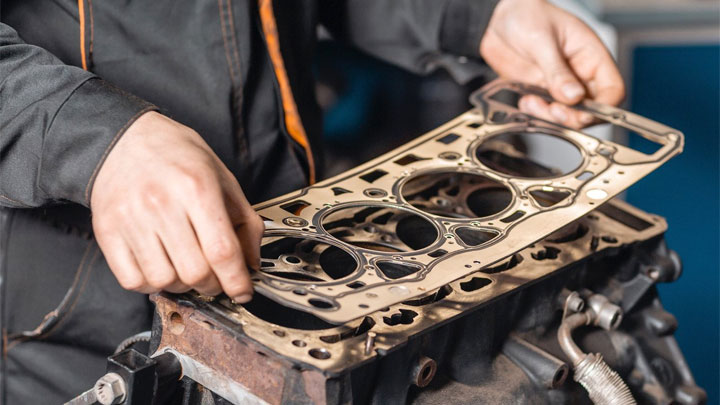
Head gasket replacement is never inexpensive. However, the verbal cost associated with such repairs tin vary substantially from one model of vehicle to the next.
This variance in toll can exist attributed to the price difference between particular gaskets, besides as the corporeality of labor required to replace the caput gasket(due south) found on a item engine.
On average, one can expect to pay between $one,200 and $ii,000 for consummate head gasket replacement. The lower end of this price range is reflective of replacement in an inline-manner engine, while the higher end of the cost spectrum correlates to most high-finish "V" configuration engines.
Preventing Head Gasket Failure
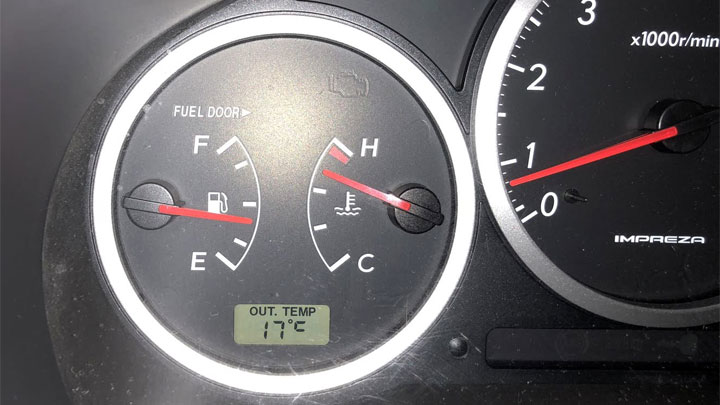
The single biggest way to forbid head gasket leaks involves keeping a shut centre on your vehicle's cooling system. This involves checking the condition of all coolant and heater core hoses, besides as periodically inspecting your engine's h2o pump and thermostat housing seals for fluid loss.
If any issues relating to cooling system integrity are noted, repair should be conducted as before long as possible. Delaying such repairs can pb to an overheating effect at a moment's notice, which in plough tin can put your engine at hazard for head gasket failure.
Diddled Head Gasket vs Cracked Head
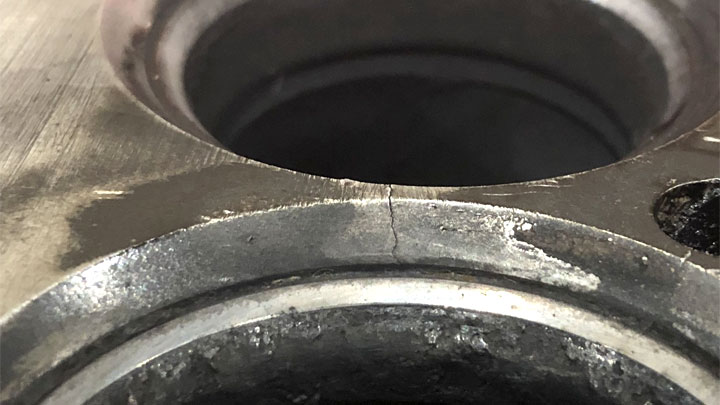
Though somewhat rare, an engine'south cylinder caput can crack, posing like symptoms to those associated with head gasket failure. All the same, a cracked head requires much more than caput gasket replacement to remedy.
Since cylinder heads are vital structural components of any engine, such failures require head repair or full replacement. During these repairs, an engine's head gaskets will also exist replaced.
Identifying the deviation between a cracked head and a blown head gasket can exist quite hard. Each result makes it possible for both combustion gases and fluid to cease upwards where they would not otherwise be constitute.
However, many issues related to a cracked cylinder head volition appear to clear upward as an engine reaches operating temperature, and the crack itself swells shut.
If any uncertainty exists equally to a cylinder head's integrity, the head in question should be taken to a car shop, where further testing can be conducted. As standard procedure, most car shops "hot tank" suspect heads, in order to visually place cracks in cylinder heads that would otherwise go unnoticed.
southernpothead1969.blogspot.com
Source: https://cartreatments.com/blown-head-gasket-symptoms/
Post a Comment for "How Do You Know if You Have a Busted Head Gasket"